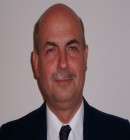
Plenary Lecture
Reverse rate-dependent nature of drug-induced changes in action potential duration is an intrinsic property of mammalian and human myocardium

Professor Peter P. Nanasi
Department of Physiology
University of Debrecen
Hungary
E-mail: nanasi.peter@med.unideb.hu
Abstract: All currently used class 3 antiarrhythmics carry serious proarrhythmic risk, which is associated with lengthening of action potential duration (APD) in a reverse rate-dependent manner, i.e. lengthening of APD is greater at longer than at shorter cycle lengths. Although several theories have been developed so far to explain this reverse rate-dependency, its mechanism has not been fully clarified. Here we propose a simple mechanism to explain the reverse rate-dependency of drug effects in the mammalian heart. Rate-dependent drug-effects of various origin were studied using agents known to lengthen or shorten action potentials allowing thus to determine the drug-induced changes in APD as a function of the cycle length. Both drug-induced lengthening and shortening of APD displayed reverse rate-dependency in human, canine, and guinea pig preparations, but not in rabbit and rat myocardium. Similar results were obtained when repolarization was modified by injection of inward or outward current pulses in isolated canine cardiomyocytes. In contrast to reverse rate-dependence, drug-induced changes in APD well correlated with baseline (pre-drug) APD values in all preparations studied. Since the net membrane current, determined from the action potential waveform was inversely proportional to APD, and consequently to cycle length, it is concluded that that reverse rate-dependency may simply reflect the inverse relationship linking net membrane current to APD. In summary, reverse rate-dependency is an intrinsic property of drug action in the hearts of species showing positive APD - cycle length relationship, including humans. This implies that development of a pure K+ channel blocking agent without reverse rate-dependent effects has little chance to succeed. A more promising approach might be to combine prolongation of action potential duration with interventions suitable to minimize arrhythmogenesis at slow heart rates. This can likely be achieved by combining K+ channel blocking drugs with blockers of plateau inward currents, such as L-type Ca2+ current and window Na+ current. This view is supported by the results obtained by either combining two distinct molecules, or by applying single drugs having intrinsically combined modes of action.
Brief Biography of the Speaker: Peter P. Nanasi was born in 1956, at Debrecen, Hungary. He graduated from the University Medical School of Debrecen with an M.D. degree in 1980. He obtained his Ph.D. degree in 1992, and he received the D.Sc. degree from the Medical Branch of the Hungarian Academy of Sciences in 1999. From 1980, he has been working at the Department of Physiology, University of Debrecen - as a full professor since 2002. At the same time, he is the chairman of the "Department of Oral Physiology and Pharmacology" at the Faculty of Dentistry since 2001. During his career, he has spent 2 years in the United States, at the Children's Hospital Medical Center and at the Department of Pharmacology and Cell Biophysics, University of Cincinnati, Ohio with professors David A. Lathrop and Shirley H. Bryant. His research interest covers the physiology and pharmacology of cardiac ion channels, including the frequency-dependent interactions, regulation of action potential duration, and cellular mechanisms of antiarrhythmic and proarrhythmic actions. He is member of the Physiological Society, British Pharmacological Society, European Working Group on Cardiac Cellular Electrophysiology, MyoNaK, and the International Academy of Cardiovascular Sciences. He has published 119 full length papers (IF=310) and 6 book chapters in English language. He was also involved in more than 160 lectures and posters in the field of cellular cardiac electrophysiology.